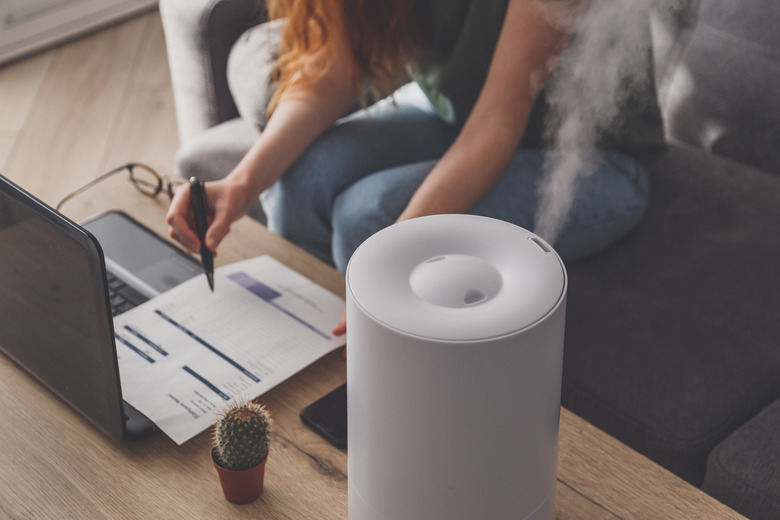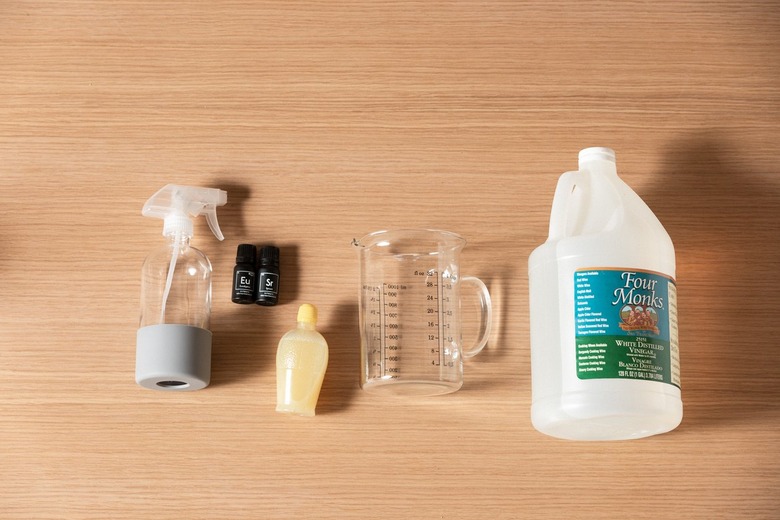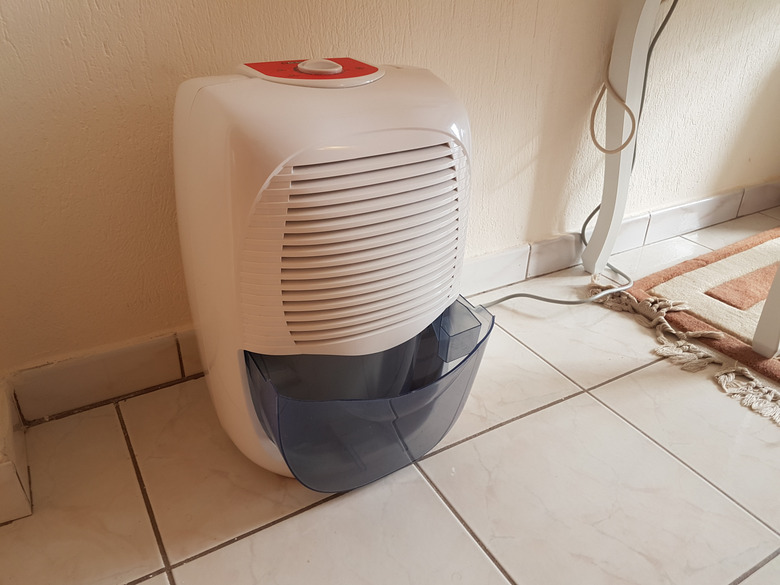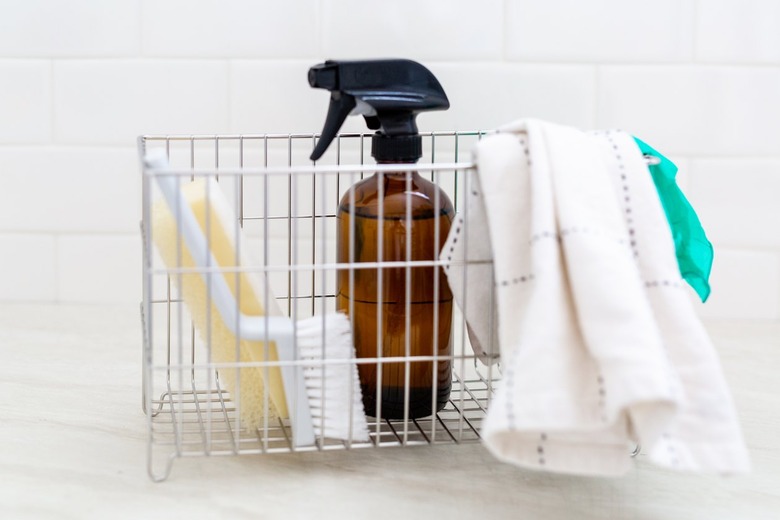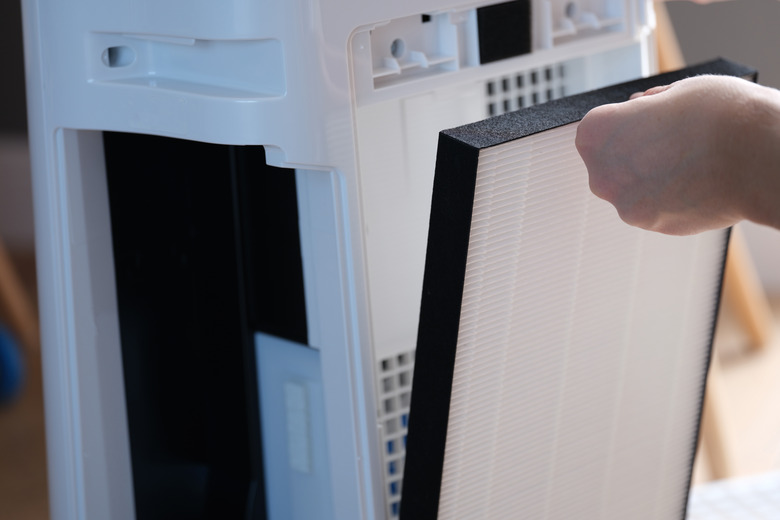How To Clean A Humidifier: A DIY Guide
Dry air can be extremely bothersome for humans, pets, and plants in a home. Central heating and air conditioning, standalone units, and fireplaces can result in ultra-dry air that affects the air quality as well as the skin, eyes, and lungs of living beings. While a humidifier adds moisture to the air to make interior spaces more comfortable for all its inhabitants, the equipment must be cleaned regularly to ensure that it doesn't spread irritants, microbes, and fungi in the mist of tiny water droplets.
A dirty humidifier is a breeding ground for mold and bacteria, which can trigger allergies, cause flu-like symptoms, and result in serious lung infections. While each manufacturer provides an owner's manual with specific instructions on how to clean a humidifier and how often to change the water, in general, it's a good practice to empty and refill the water reservoir daily and deep clean the entire unit weekly.
Tip
It's important to clean and dry the humidifier when storing it away for the summer (or winter, depending on your climate) to prevent mold growth. Be sure to clean the humidifier after taking it out of storage and before using it again as well.
Daily Humidifier Cleaning
First, unplug the humidifier. Never empty, refill, or clean any electrical appliance while it is plugged into an electrical outlet. For daily maintenance, follow these simple steps:
- Disassemble the humidifier.
- Remove the water reservoir.
- Pour any remaining water in the reservoir into the sink.
- Rinse thoroughly with fresh water.
- Wipe the outside of the reservoir dry with a soft cloth, and allow it to air dry if necessary.
- Refill the reservoir with distilled water or tap water per the owner's manual.
How to Clean a Humidifier With Vinegar
Vinegar is a readily available and eco-friendly cleaning product that works to not only clean a humidifier but also remove hard water deposits. Before using vinegar in a humidifier, take time to check the owner's manual for specific instructions and/or warnings against using vinegar in the unit.
At the recommended cleaning intervals — at least every seven days depending on the manufacturer's instructions — deep clean the unit. Here's how to clean the humidifier with vinegar:
- Unplug and disassemble the unit.
- Empty the reservoir, and rinse it thoroughly.
- Refill the reservoir with a solution of 1 to 2 tablespoons of white vinegar and 4 cups of water.
- Soak for 10 to 30 minutes.
- Put on the reservoir cap and cover the steam hole.
- Swish gently from side to side. Do not shake up and down.
- Drain the water and vinegar solution.
- Rinse the reservoir thoroughly. If necessary, use a long toothpick to clear the steam outlet and drain hole.
Some manufacturers, like Vicks, recommend soaking the interior of the reservoir with up to 4 inches of white vinegar first and then adding water or using equal parts vinegar and water and swishing it side to side to clean the interior. In some cases, if the water is extremely hard, a light scrubbing of all the cracks and crevices with a soft toothbrush may be necessary to completely clean the reservoir.
Also remove the steam nozzle if possible and soak it in a solution of equal parts water and vinegar. Scrub gently to remove mineral deposits, which may show as a white dust or a crusty residue. Then, rinse and dry the nozzle before reattaching it to the humidifier.
In addition to cleaning the inside of the humidifier, remove any dust and debris from the exterior. Some units, such as the AquaOasis ultrasonic humidifier, have a separate base that also requires soaking with the diluted vinegar solution. Avoid wetting the electrical element. To clean the outside of the unit:
- Wipe the exterior with a cloth lightly dampened with dishwashing liquid and water.
- Wipe it again with a clean, damp cloth.
- Air dry it or wipe it dry.
Allow the humidifier to dry completely before refilling it and plugging it back into an outlet. Do not overfill the reservoir, and wipe off any stray water droplets on the exterior. Plug in the humidifier and make sure it is producing a cool or warm steam mist, as applicable. If possible, adjust the unit to provide a 30 to 50 percent humidity level in the room.
Warning
Only use 5 percent white vinegar or apple cider vinegar when cleaning the humidifier. Do not use a 20 or 30 percent vinegar product; the higher vinegar concentrations are a strong acid and are not safe for use in cleaning unless diluted by one part vinegar to five or six parts water. Wear safety goggles and gloves when handling vinegar solutions.
How to Clean a Humidifier With Bleach
Chlorine bleach is known for its ability to kill molds, bacteria, and viruses. Obviously, dirty surfaces should be cleaned first. Then, a bleach solution should be applied to disinfect the area. The Centers for Disease Control and Prevention recommends wearing protective gear, such as safety goggles and gloves, when mixing a bleach solution for immediate use.
In general, chlorine bleach is used to disinfect a humidifier. Use only plain bleach, not a scented product. After cleaning the unit and thoroughly rinsing the reservoir, here's how to disinfect a humidifier with bleach:
- Combine 1 teaspoon of bleach with 1 gallon of water.
- Add it to the empty reservoir.
- Swish gently to wet the entire interior surface.
- Soak for 20 minutes.
- Pour out the bleach and water solution.
- Rinse the reservoir until the bleach smell is gone.
- Allow the reservoir to air dry or dry it with a clean cloth.
Avoid leaving chlorine bleach in the reservoir for more than one hour, as it is corrosive and may damage the unit. If necessary after rinsing, run the humidifier outside for a few minutes to ensure the bleach smell is gone. If anyone in the home is sensitive to chlorine bleach, consider disinfecting the unit with hydrogen peroxide to avoid accidental cross-contamination and/or allergic reactions.
Warning
Do not mix vinegar and chlorine bleach. The combination of bleach and an acid results in chlorine gas, which irritates and damages the eyes, throat, and respiratory system and can result in permanent lung damage and death.
How to Clean a Humidifier With Hydrogen Peroxide
A solution of 3 percent hydrogen peroxide can also be used to clean and disinfect a humidifier. After unplugging the unit and emptying the reservoir:
- Combine four parts of water and one part of hydrogen peroxide.
- Pour the solution into the reservoir.
- Swish gently, and let soak for 30 minutes.
- Scrub gently with a soft toothbrush to disinfect the area and get rid of any grime buildup.
- Rinse the reservoir thoroughly with fresh water.
Allow the unit to air dry before refilling it with distilled water or tap water. If the unit doesn't begin producing a mist, try soaking with a vinegar solution to remove mineral deposits and unclog the steam nozzle.
How to Troubleshoot a Faulty Humidifier
While regular cleaning is essential to keep a humidifier running efficiently, it occasionally requires extra help to keep the mist flowing. In the case of evaporative humidifiers, some have a wick that has been treated with an antimicrobial solution. Soak the wick in plain water while cleaning the rest of the unit with vinegar or another solution.
Other humidifier models may include a filter and/or demineralization cartridges that must be replaced regularly. In addition, some units require distilled water, a combination of distilled water and tap water, or a little added salt to produce cool or warm steam.
- Change the filter at the recommended intervals or when it becomes clogged.
- Install a new demineralization cartridge.
- Use only distilled water or equal parts distilled water and tap water.
- Add 1/8 teaspoon of table salt to soft or distilled water.
Some humidifier filters are washable. When cleaning the humidifier, remove the soft or hard washable filter and:
- Immerse it in water or equal parts of water and white vinegar.
- Soak it for 15 to 20 minutes.
- Rinse it with hot water.
- Squeeze soft filters gently to remove excess water; do not twist or wring.
- Air dry the filter before putting it back into the humidifier.
- Turn over the filter with each cleaning to extend its life.
If the unit is spitting water or there are black specks in the reservoir, a deep cleaning with vinegar helps clear out lingering mineral deposits that are clogging the steam nozzle. When reviving a vintage or long-stored steam vaporizer or humidifier, a good soak with vinegar and water may dissolve the caked-on mineral deposits and make it usable. Keep all hot steam units out of the reach of children and pets.
In addition, never use essential oils, vapor rubs, or any other additives in the reservoir because the oils can damage the plastic of the water tank as well as the heating element. However, some manufacturers have provided a cup for essential oils and/or scented pads made specifically for their humidifiers. These are generally not interchangeable among different manufacturers' units. If adding a scent to the room is desired, consider using a separate essential oil diffuser rather than risking damage to the humidifier.
